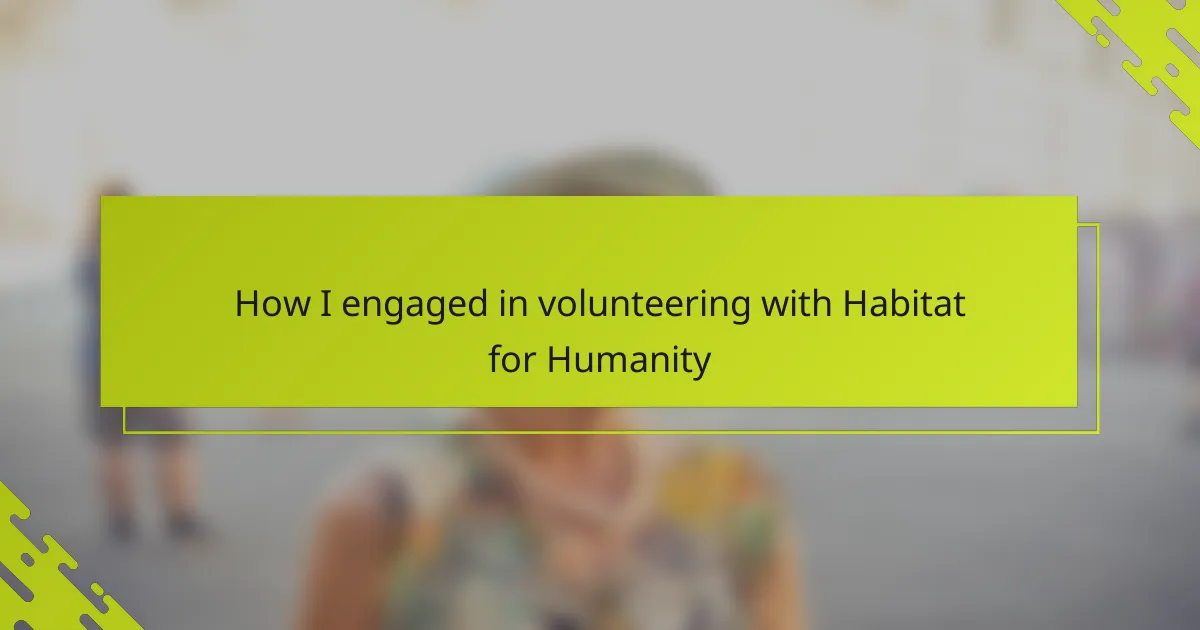Key takeaways
- Volunteering with Habitat for Humanity fosters not only physical construction but also community building and empowerment, emphasizing inclusivity and diversity.
- Creating authentic connections through shared experiences enhances teamwork, making the volunteering experience more fulfilling and impactful.
- Preparation and understanding project goals are essential for effective contributions, helping to alleviate anxiety and improve the overall experience.
- Overcoming challenges, such as physical exhaustion and communication gaps, can deepen connections and foster a sense of belonging among diverse volunteers.
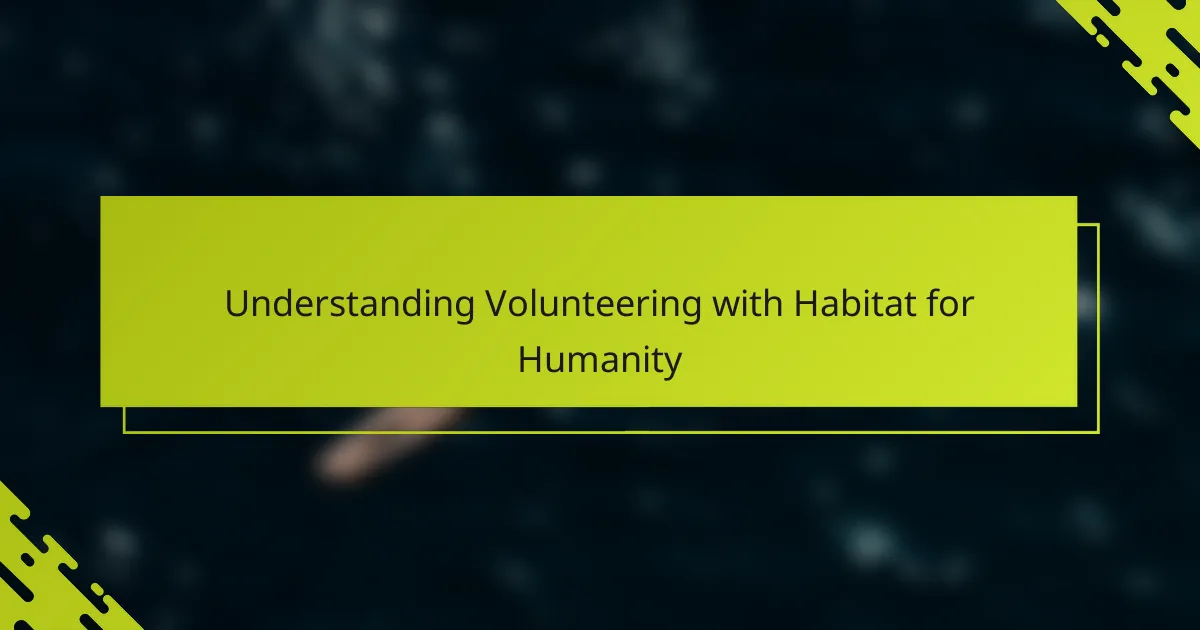
Understanding Volunteering with Habitat for Humanity
Volunteering with Habitat for Humanity means more than just swinging a hammer or painting walls. It’s about contributing to a cause that builds not just houses but hope, stability, and a genuine sense of community. Have you ever wondered how your small actions can create such a lasting impact on someone’s life?
From my experience, the work is physically demanding but incredibly rewarding. There’s something deeply humbling in standing side by side with future homeowners who are as invested in their new homes as you are. It shifts your perspective—you realize it’s not just about construction; it’s about empowerment and belonging.
What struck me most was how welcoming and inclusive the environment felt, especially as a queer woman. Habitat embraces diversity in a way that reinforces the idea that everyone deserves a safe space, both in the homes they build and within the community they create together. It’s a reminder that volunteering is also about building bridges across different walks of life.
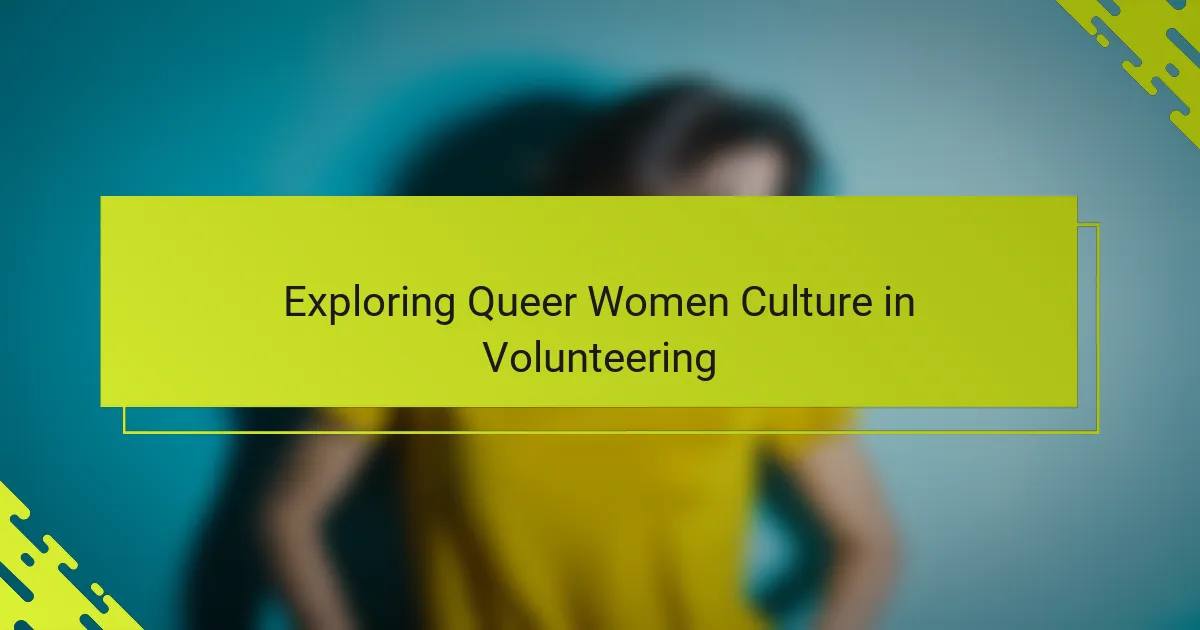
Exploring Queer Women Culture in Volunteering
When I first joined Habitat for Humanity, I was curious about how queer women navigated the world of volunteering, which often feels heteronormative. I found that the culture among queer women volunteers is one of mutual support and radical acceptance—it’s as if building homes and building chosen family happen simultaneously. Have you ever noticed how much stronger teamwork feels when authenticity is welcomed on every level?
One moment that stays with me is during a lunch break, sharing stories with other queer women about facing invisibility in other spaces. It was powerful to realize that here, our identities weren’t just tolerated—they were a source of connection. This kind of openness shifts the whole experience; volunteering becomes more than service, it becomes a form of community care.
I sometimes wonder if this unique blend of activism and identity is what makes volunteering so fulfilling for queer women. It’s not just about the physical work; it’s about affirming each other’s existence and creating safe spaces beyond just the houses we build. Isn’t that the kind of impact we all hope to have?
![Finding [censured] Inclusive Volunteer Opportunities](/wp-content/uploads/finding-censured-inclusive-volunteer-opportunities-3.webp)
Finding [censured] Inclusive Volunteer Opportunities
Finding [censured] inclusive volunteer opportunities can feel daunting at first, but I discovered that intentional searching and asking around made all the difference. Have you ever felt unsure whether a volunteer space truly embraces queer identities? I found that organizations openly sharing their commitment to diversity and inclusion eased that uncertainty for me.
What really helped was connecting with local [censured] groups and online communities where members shared their experiences and recommendations. From my viewpoint, hearing personal stories about welcoming environments gave me the confidence to step into volunteering without hesitation. Isn’t it comforting to know you’re not alone in wanting a space that honors your whole self?
Sometimes, simply reaching out to ask organizations about their inclusivity policies can reveal more than their websites do. I recall one volunteer coordinator’s honest reassurance that everyone is welcome, which instantly made me feel seen and valued. Could a simple conversation be your gateway to finding the right place? In my experience, it often is.
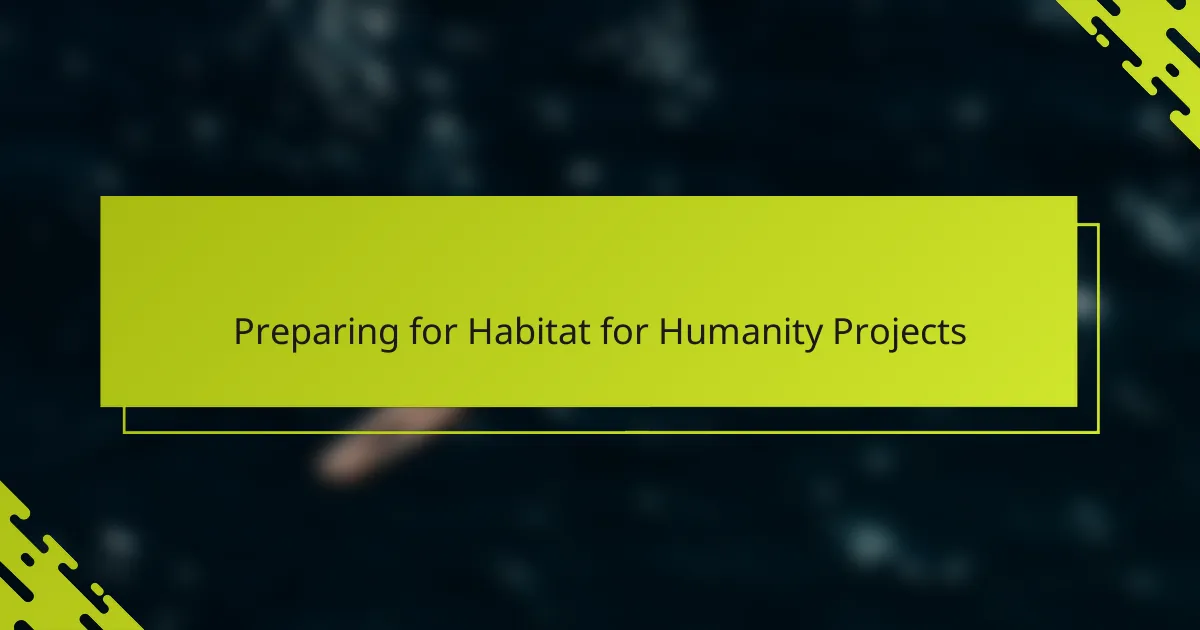
Preparing for Habitat for Humanity Projects
Getting ready for a Habitat for Humanity project meant more than packing my tools; it was about mentally gearing up for hands-on work that challenges both body and spirit. Have you ever noticed how preparing well beforehand not only eases the physical strain but also deepens your connection to the mission? For me, taking time to understand the project’s needs made every task feel purposeful rather than just busywork.
I remember carefully selecting comfortable clothes I didn’t mind getting dirty and sturdy boots that could handle rough terrain. It sounds simple, but these small preparations saved me from unnecessary discomfort and kept my focus on helping others. Isn’t it striking how the right gear can transform work that might feel exhausting into something you genuinely enjoy?
Another thing I did was to familiarize myself with Habitat’s safety guidelines and project goals through their orientation materials. Knowing what to expect helped alleviate my initial anxiety and allowed me to show up with confidence. Have you experienced how a bit of preparation can turn nervous anticipation into excited readiness? That shift made all the difference on the build site.
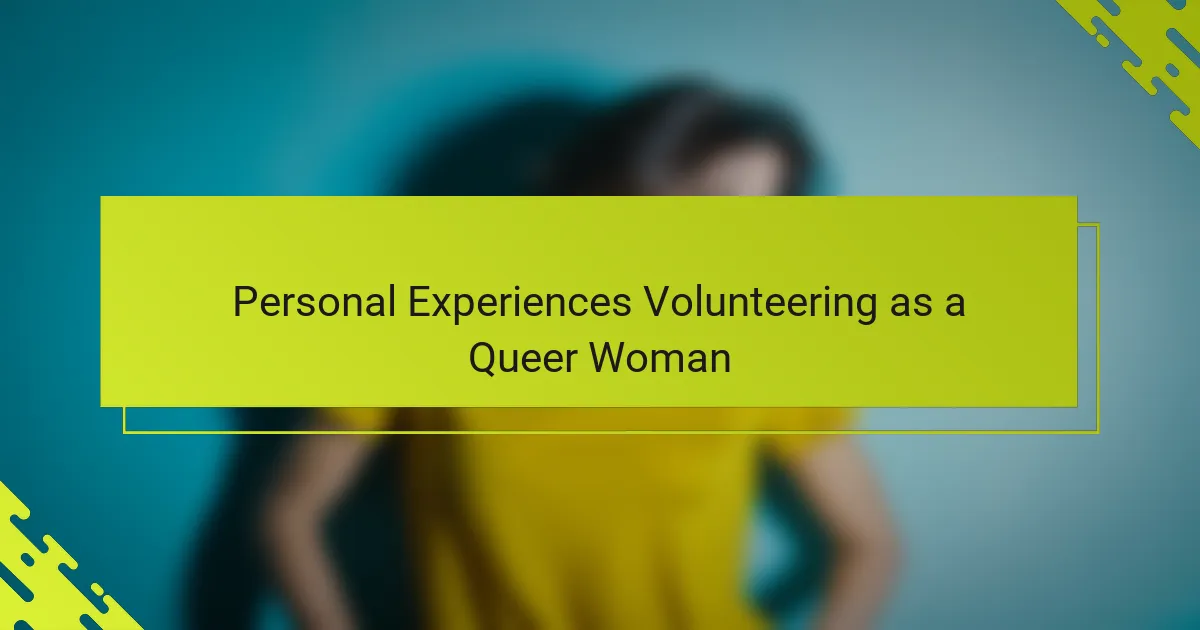
Personal Experiences Volunteering as a Queer Woman
Volunteering as a queer woman with Habitat for Humanity revealed to me how powerful vulnerability can be in creating authentic connections. At one build, I found myself opening up about my identity to a team that listened with genuine curiosity rather than judgment. Have you ever felt that rare moment when being yourself actually strengthens the bonds you share? That day, I realized how essential safe spaces are—not just in homes we build, but also among the people we work alongside.
Sometimes, I caught myself wondering if my presence challenged assumptions or brought new perspectives to the build site. It was both nerve-wracking and uplifting to see how openly my fellow volunteers embraced difference, not as something to tolerate, but as something to celebrate. I remember one instance when another queer woman and I exchanged knowing glances during a team discussion; that quiet solidarity made the physical work feel lighter somehow.
What struck me most was how volunteering allowed me to reclaim parts of my identity often marginalized elsewhere. Being part of a diverse crew meant that pronouns, stories, and experiences weren’t just acknowledged—they were woven into the fabric of the community we created. Doesn’t that kind of inclusion make every nail hammered and wall raised feel like an act of resistance and belonging at the same time?

Overcoming Challenges in Volunteer Work
Challenges were definitely part of my volunteering journey, especially when physical exhaustion set in after long hours under the sun. Have you ever felt that tug between wanting to give your best and your body begging for rest? I learned that pacing myself and listening to my limits didn’t diminish my contribution—it actually made me more effective in the long run.
Sometimes, communication gaps on-site caused moments of frustration. I recall a day when instructions weren’t clear, and tensions briefly flared. But stepping back, taking a breath, and asking questions out loud helped everyone realign our efforts. Isn’t it interesting how patience and open dialogue often solve more problems than rushing ahead?
There were also times when I doubted if I truly belonged, especially as a queer woman in a largely unfamiliar environment. Yet, those feelings pushed me to seek connection and share my story, which often transformed uncertainty into solidarity. Have you noticed how vulnerability can turn challenges into bridges rather than barriers? For me, embracing those moments made the work feel not only worthwhile but deeply human.
